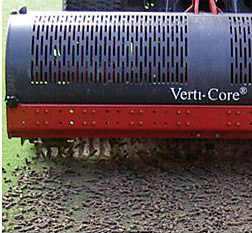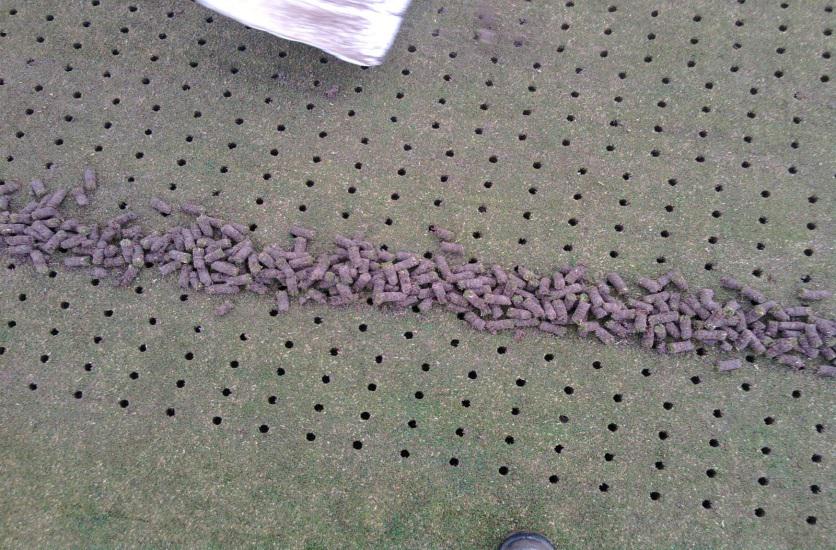Aeration
Why do we need to aerate the lawn?
Over time the soil that the lawn grows on can become compacted due to a number of reasons such as use for sports, walking, vehicles, parking and children playing. This soil compaction can have a negative effect on your lawn. The damage to your lawn from soil compaction results from the pore spaces within the soil becoming smaller and this leads to both a reduced amount of air held in the soil, restricted air flow and reduced water infiltration into the soil. These results of soil compaction are damaging to a lawns health.

Reduced air levels and restricted air circulation in the soil means that the grass roots are less able to take up oxygen. Reduced soil pore space also leads to reduced levels of nutrient uptake from the soil. Oxygen is a vital input into a plants growth cycle. If the ability of water to infiltrate the soil is limited by soil compaction then the water will not infiltrate as deeply into the soil as normal, this means the lawns roots will not develop as deeply and so the lawn will be more at risk from drought and other environmental stresses. Soil compaction also means there is greater resistance against the roots as they try to develop to greater depths. Poor development of roots below the soil will result in a poor lawn condition above the soil.
There are other factors besides soil compaction that may give us reason to aerate your lawn. If your lawn contains a considerable build -up of thatch then we can use core aeration to help break down the thatch. This process occurs as the cores of soil that are left on the lawn surface by core aeration introduce soil micro-organisms into the thatch layer. These micro -organisms breakdown the layer of thatch and return nutrients to the soil.
Coring
The modern corer is a machine powered by the power-take-off of the pulling tractor, or a self -propelled pedestrian machine. The result is a series of holes "punched" into the surface. The hole spacing and pattern can be precisely determined. As the tines are driven into the ground they break up the surrounding soil without disrupting the surface and greatly alleviate compaction.

Nutrients and water are now able to penetrate to the desired level. Surface disruption and down time is kept to a minimum as the small holes left on the surface can be quickly refilled with fresh, loose topdressing and subsequently the turf will be rejuvenated by being able to deep root through the thatch and mat into the subsoil below.
The resulting combination of loose cores and de-compacting, coring action can bring new life to turf and lawn surfaces and prevent the need for costly removal and relaying of turf. Newly laid turf surfaces must not be used for a considerably longer period than cored surfaces, an important factor for many public access surfaces, schools and sporting venues.
